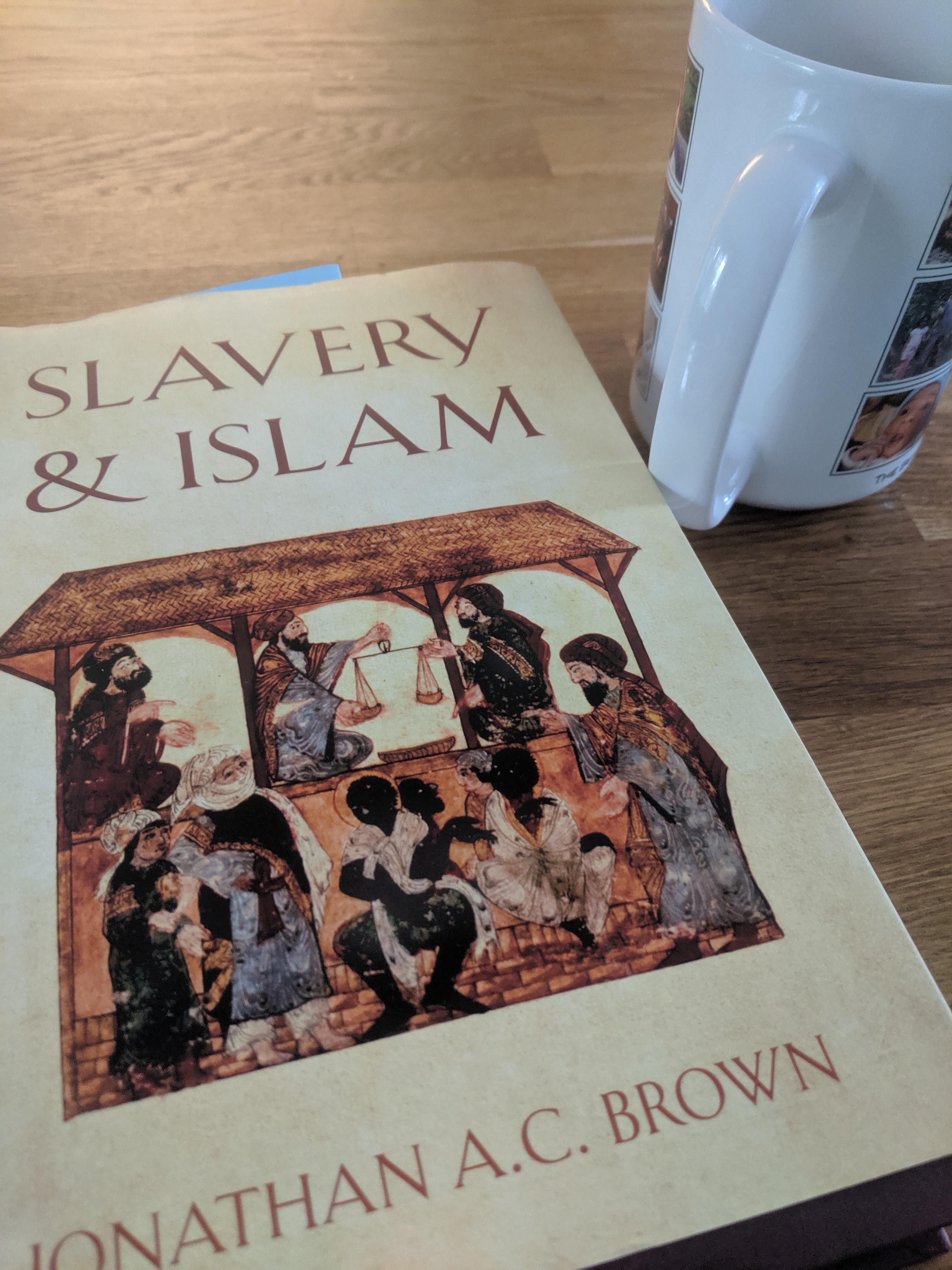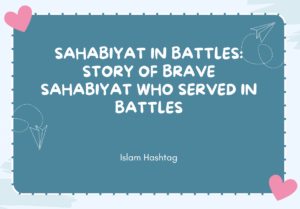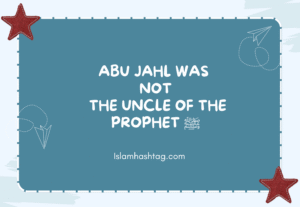A book on Slavery and Islam
What happens when authorities you venerate condone something you know is wrong?
Every major religion and philosophy once condoned or approved of slavery, but in modern times nothing is seen as more evil. Americans confront this crisis of authority when they erect statues of Founding Fathers who slept with their slaves. And Muslims faced it when ISIS revived sex-slavery, justifying it with verses from the Quran and the practice of Muhammad Sallalahu alaihe wa sallam.
Exploring the moral and ultimately theological problem of slavery, Jonathan A.C. Brown traces how the Christian, Jewish and Islamic traditions have tried to reconcile modern moral certainties with the infallibility of God’s message. He lays out how Islam viewed slavery in theory, and the reality of how it was practiced across Islamic civilization. Finally, Brown carefully examines arguments put forward by Muslims for the abolition of slavery.
About the Author of the book”Slavery and Islam”
Jonathan A.C. Brown is Associate Professor of Islamic Studies and the Alwaleed bin Talal Chair of Islamic Civilization in the School of Foreign Service at Georgetown University. He is also Director of the Alwaleed bin Talal Center for Muslim–Christian Understanding. His previous books include Misquoting Muhammad and Hadith: Muhammad’s Legacy in the Medieval and Modern World, both of which are published by Oneworld. He lives in Virginia.
Publisher: Oneworld Publications
A glimpse into the Book “Slavery and Islam” –
It’s accepted that Islam did not inaugurate a novel regime of slavery. The Qur’an’s references to slavery were references to an unquestioned fact of life in the seventh century. As Muslim jurists developed the Shariah’s laws on riqq, they were greatly influenced by the existing traditions of servitude and dependent labor in the Late Antique Near East. What the Qur’an did was to bring unprecedented incentives to free slaves:
1) the use of alms to help free slaves and aid freed ones;
2) requiring freeing slaves as an expiation for certain sins or crimes;
3) and the encouragement of mukātaba. 100 The precedent of the Prophet صلى الله عليه وسلم and Islamic law as it coalesced formally from the mid eighth century onward introduced new restrictions on enslavement and new rights for slaves: people could not be enslaved for debt, for punishment, and they could not sell themselves or their families into slavery (all major causes of enslavement at various points in prior millennia). In the practice of concubinage, the Shariah uniformly prohibited sex with mukātaba slaves, and—perhaps the most unprecedented of all rules—the children born of concubines received exactly the same legal status and social standing as children born of free wives.
Riqq in the Shariah
The author talks about Riqq in a great detail.He asks “What about the Islamic institution of riqq, the main term for slavery under Islamic law?” Would it qualify as “slavery in its absolute form”? Of course, there is tremendous internal diversity in the Shariah, and there was even more diversity in how slaves were actually treated in the oceanic geographical and temporal expanse of Islamic civilization .
So here we will try to provide some generally consistent features in the letter of the Shariah, organized long the lines of important rights. We will not get into the multitude of local slavery practices and institutions in Islamic civilization because here we are interested in what Islamic law in its ideal form permitted and what it forbade.
● In terms of religious practice, Muslim slaves had the right to perform their required prayers but were not required to attend the Friday communal prayer, pay zakat, or perform Hajj. Slaves could attend Friday prayer if their master allowed it, and a preponderance of jurists even allowed slaves to lead the Friday prayer. Slaves could lead daily congregational prayers due to hadiths stating that slaves did so during the time of the Companions.A Muslim master could not force their non-Muslim slave to convert to Islam, and one could not prevent a dhimmī slave from performing their religious obligations, nor from drinking wine.
● In terms of the right to free movement, this was under the control of the master unless the slave had an agreement to buy back their freedom over a period of time (mukātaba—best translated as gradual self-purchase, it was a very common practice, especially in the Ottoman realm, at least some parts of West Africa, and most likely elsewhere as well),in which case they could not be prevented from travel.
● In terms of other roles in social and political life, slaves cannot be the leader (imam, caliph) of the Muslim umma because of their legal incapacity in owning property (see below). Slaves could serve in lesser leadership positions due to Prophetic hadith ordering obedience to commanders“even if he is an Ethiopian slave.”
Only the Hanbali school allowed slaves to serve as witnesses in court, but the school’s reasoning is instructive: being a slave has no link to uprightness (ʿadāla), virtue (muruwwa), piety or knowledge, so slavery has no impact on functions based on these qualifications.68 Slaves could engage in contracts and agreements if permitted by their master, and slaves could even make binding offers of protection for non-Muslims travelling in Muslim lands.Slaves could and did take free people to court for violating contracts or similar arrangements
●In terms of marriage and family relations, slave mothers could not be separated from their young children, with the Hanbali school holding that separating any family members to the level of uncles/aunts is prohibited and Hanafis classifying it as strongly discouraged (all due to numerous hadiths on this).
The Hanbali and Shafi schools did not allow a master to force a male slave to marry or divorce against his will.A master could not prevent a slave woman who was married from being with her husband at night, and a married slave woman was off limits for her owner physically as
well as in terms of what he could see of her body.
●A master was required to arrange a marriage for a male or female slave who expressed a desire for a partner (or, in the case of a female slave, a master could make her his concubine). The issue of sex with female slaves is a probably the most troubling aspect of slavery for modern minds. It crystallizes the slavery conundrum like nothing else. And yet it was not questioned in the ancient Near East and the Mediterranean even in the early Christian centuries.
According to theQur’an, both marriage and ownership (in the case of a female slave) were relationships in which sex was licit (Qur’an 23:5-6). Within these relationships, consent for sexual relations was assumed. In other words, the relationship itself entailed ongoing consent for sex (but only if the slave girl was solely owned by one man and that she was not married; otherwise, she was off limits).
Kecia Ali has observed that there is no evidence for any requirement for consent for sex from slave women in books of law from the eighth to the tenth centuries.In this regard, slave women had a status similar to underage daughters. Both could be married off by their fathers without their consent (since their consent had no legal bearing).The marriage contract is different from the consummation, which could onlyoccur when daughters had reached maturity as determined by the standards of a given community.
Ali has written about how slavery and “femaleness” often resembled one another as handicaps in the letter of Islamic law. And the historian Ehud Toledano insightfully observed that the lack of choice faced by female slaves taken as concubines by their owners did not differ much from the lot of brides headed into marriages arranged by their families, neither in medieval Islamic civilization nor in Western Europe.
Islam gave rights to slave and helped in eradicating slavery
●The Shariah offered protection to both wives and concubines, but it came not under the rubric of consent but that of harm. By definition, the crime of rape (i.e, forced zina) could not occur within a licit relationship.But transgressive harm could still be done by the man. Wives and concubines could complain to local judges if they were being abused or if his demands for sex were excessive. The Hanbali scholar al-Buhūtī (d. 1641) even says that if a master forced a slave woman unable to bear intercourse to havesex, she would be freed as a result. (For more on the issue of concubinage and consent, see the Appendix at the end of this article.)
● The slave’s right to property was a complex issue in Islamic law, since the main proof texts seemed to resist the principles that jurists felt were entailed by the status of slavery. Most clearly, the Qur’an urged masters to agree to mukātaba contracts if their slave sought one. The fact that the slave would be amassing money to pay the installments suggests some ownership rights.
● In terms of the right to life and physical integrity, it was prohibited to kill or seriously injure one’s slave. In the Hanafi school of law, this was even punishable by death. Any severe punishment or treatment that left lasting scars was grounds for forced manumission (either de facto or de jure), and in the Ottoman period (the period for which we have the best records), slaves often approached courts on these grounds.
Castrating slaves was prohibited.A master could discipline their slave verbally or physically, but he majority position was that this could not exceed what a husband/father could do to his wife or child (other jurists allowed harsher punishment due to an inference from the hadith, “Would one of you hit his wife like a slave and then sleep with her at the end of the day?”).
● In terms of treatment, hadiths made it clear that slaves had to be fed from the food of their owners, clothed from their clothes, and not overworked.Some aspects of the slave’s treatment were based on local conventions of what was reasonable and normal, on the basis of a hadith stating that, “Then slave is owed his food and his clothing according to what is right in custom (maʿrūf)….
Slaves could not be overworked, but what constituted a normal workload was based on customary understandings of workload in that society (it’s interesting to note that the rebel who motivated many of the African slaves in the alluvial plains of Iraq to revolt in the famous ninthcentury Zanj rebellion paraphrased this hadith in his invectives against their masters, who had “done to them what God has prohibited”).
Other aspects of slaves’ treatment had firmer guidelines. Masters had to provide slaves with dress comparable to other slaves in that society, buttheir clothing had to be appropriate to the weather and could not be limited merely to covering the slave’s nudity (ʿawra).
And a master could not require a slave to work for money if the master was then going to take those earnings from them. Such an exchange had to come as part of a mukātaba agreement. If a slave became sick, crippled or old, the master still had to provide for them because that responsibility stemmed from ownership, not from the slave’s work. In the case of riqq, slave men and women had rights that were comparable to other dependent segments of society, such as minor children or wives (except wives had full capacity to own property and engage in contracts, etc.):
slaves had the right to unencumbered conjugal relationships; the right to religious observances; limited rights to property (we should remember that the Shariah granted male and female slaves more rights to property ownership than married British women had until the late nineteenth century); and in terms of physical integrity and protection from abuse and exploitation, their position was similar to that of wives and minor children, including the owner’s obligation to care for slaves unable to work.
A Must read book in my opinion .You won’t be able to put it down once you start reading it .Get it now from Amazon.
If we are searching for the phenomenon of slavery, what are we really looking for? Is it the label ‘slave’ that matters? Or is it the reality of the condition behind it?
What would it mean to ‘own’ a person? Does it mean to have total control over them? We have full control over our young children, but, unlike a chair or a pen, we cannot seriously physically harm them without legal consequence. In fact, this distinction between ownership and control is not very helpful for defining slavery.”, get this book.
Discover more from Islam Hashtag
Subscribe to get the latest posts sent to your email.







Very interesting